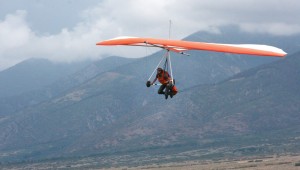Editor’s note: This article originally ran in the Leadville Herald-Democrat on July 18. Reprinted with permission.
The collapse of the old Denver & Rio Grande tunnel on U.S. 24 takes readers back to 1890 when the tunnel was first constructed.
According to drgw.net, a website dedicated to preserving the history of the Western D&RG Railroad, the railroad line leading from Salida to Malta, just south of Leadville, was constructed as part of the narrow-gauge extension of the Royal Gorge Route in 1880.
From Malta, what would become the Blue River Branch was run up to Leadville then up and over Fremont Pass. The branch then worked down the northeast side of the pass as far as Robinson.
Another branch was extended north to the charcoal ovens at Crane’s Park, near the south side of what is today Tennessee Pass. The goal was to tap the mining boom underway in Leadville.
In 1881, the branch from Malta to Crane’s Park was extended over the Divide at Tennessee Pass, then down the Eagle River Valley to Red Cliff, where silver mining was taking place. Two more miles from Red Cliff to Rock Creek came in 1882.
Starting in 1886, the D&RG fought it out with the Colorado Midland to see which could reach Aspen first, where new mines were being worked. The D&RG won the race, completing 104 miles of the new narrow-gauge line west from Red Cliff through Glenwood Canyon to Glenwood Springs, then back along the Roaring Fork to Aspen by the end of 1887.
Between 1888 and 1890, the D&RG was eager to construct a standard-gauge railroad across the mountains, and the Tennessee Pass Route appeared to be the way to go. Although most of the route was suitable, things would need to be realigned over the pass. In 1889-1890 the first Tennessee Pass Tunnel was bored under the Divide, 200 feet lower than the original crossing. Initially, narrow-gauge tracks were run through it until the route was ready for standard gauge. By late 1890, everything was standard gauge – Tennessee Pass, Glenwood Canyon and the Aspen Branch.
Along with the Tennessee Pass Tunnel, the D&RG also constructed three shorter tunnels just to the west of Tennessee Pass, according to the Herald Democrat. The Pando, or Mitchell Tunnel, is on the hill above Camp Hale and is 242 feet long. It was constructed in 1890.
Near Gilman is the Belden Tunnel, 396 feet long, also built in 1890, and west of that is the Rock Creek Tunnel. All were single-track tunnels.
Several mishaps are noted at the main tunnel, including one on Oct. 16, 1909, when an eastbound D&RG passenger train rear-ended a freight train inside the tunnel. There were no fatalities.
Then on May 17, 1909, a track walker discovered a 500-foot-long cave-in 1,000 feet inside the west portal. The tunnel was empty at the time. It was reopened on May 31, 1909.
In 1945 a new, larger Tennessee Pass tunnel was constructed, replacing the 1890 tunnel. It was just 50 feet west of the original tunnel. Both portals of the original tunnel were covered with dirt to prevent entry.
Tennessee Pass was always an expensive route for the D&RG, with three-percent-plus grades on the west side and frequently heavy snow. The first time an attempt was made to shut down the Tennessee Pass route was in 1987 when most train traffic was diverted to the Moffat Tunnel and just two trains a day used Tennessee Pass.
It was reactivated in 1988 to become part of a D&RG and Southern Pacific Central Corridor Route between California’s Bay Area to the east. Trains went from two to 30 per day by early 1996.
However, after the merger of Southern Pacific and Union Pacific on Sept. 11, 1996, the decision was made to eliminate Tennessee Pass.
The last revenue train, from Pueblo to Minturn, went over the pass on Aug. 23, 1997.


